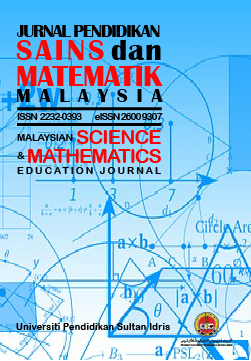UTAUT2 Primary School Programming Instructional Questionnaire Adaptation to Malay Language: A Face and Content Validation Procedure
DOI:
https://doi.org/10.37134/jpsmm.vol13.2.7.2023Keywords:
UTAUT2, Content Validity, Content Validity Ratio (CVR), programming, Mathematics educationAbstract
This research adopted the extended version of the Unified Theory of Acceptance and Use of Technology (UTAUT2) to assess the level of acceptance of programming in the classroom by primary school mathematics teachers in Malaysia. It aims to translate the English questionnaire based on UTAUT2 into Malay. This process consists of three major components: preliminary consideration, translation, and validation. The translation procedure consists of seven stages, and its validation is determined by the content validity ratio (CVR). Six experts were involved in the translation procedure, while eight experts were involved in the content validity evaluation. The results indicate that three of the thirty submitted items must be rejected: items 8 (demography), 27 (hedonic motivation), and 30 (behavioural intention). As a result, the UTAUT2 questionnaires have been translated into Malay, assessed for contextual and sentence stuctures congruence between the original version and the translation, and adapted based on the research conducted in the appropriate context.
Downloads
References
Best, J. W., & Kahn, J. V. (2006). Research in Education (A. E. Burvikovs, Ed.; Tenth). Pearson Education Inc.
Brislin, R. W. (1970). Back-translation for Cross-Cultural Research. Journal of Cross-Cultural Psychology, 1(3), 185–216.
Cohen, L., Manion, L., & Morrison, K. (2018). Research Methods in Education (Eighth). RoutledgeFalmer.
Creswell, J. W., & Guetterman, T. C. (2021). Education Research: Planning, Conducting, and Evaluating Quantitative and Qualitative Research (Sixth). Pearson Education Limited.
Holo, O. E., Kveim, E. N., Lysne, M. S., Taraldsen, L. H., & Haara, F. O. (2022). A review of research on teaching of computer programming in primary school mathematics: moving towards sustainable classroom action. Education Inquiry, 00(00), 1–16. https://doi.org/10.1080/20004508.2022.2072575
Lawshe, C. H. (1975). A Quantitative Approach To Content Validity. Personnel Psychology, 28(4), 563–575. https://doi.org/10.1111/j.1744-6570.1975.tb01393.x
Nadal, C., Sas, C., & Doherty, G. (2019). Technology acceptability, acceptanceand adoption - definitions andmeasurement. Conference on Human Factors in Computing Systems, 1–6. https://www.researchgate.net/publication/331787774_Technology_acceptability_acceptance_and_adoption_-_definitions_and_measurement
Pagé, I., Roos, M., Collin, O., Lynch, S. D., Lamontagne, M.-E., Massé-Alarie, H., & K. Blanchette, A. (2023). UTAUT2-based questionnaire: cross-cultural adaptation to Canadian French. Disability and Rehabilitation, 45(4), 709–716. https://doi.org/10.1080/09638288.2022.2037746
Ramli, M. S., Shafie, S., & Nasir, N. (2023). The Validityof Teaching and Learning Module Integrated Challenge-Based Learning Methods in Topic Consumer Mathematics. Jurnal Pendidikan Sains Dan Matematik Malaysia, 13(1), 1–7.
Siraj, S., Abdullah, M. R. T. L., & Rozkee, R. M. (2021). Pendekatan Penyelidikan Rekabentuk Dan Pembangunan (Kedua). Universiti Pendidikan Sultan Idris.
Talib, O. (2013). Asas Penulisan Tesis PEnyelidikan & Statistik (Pertama). Penerbit Universiti Putra Malaysia 2013.
Thorndike, R. M., Cunningham, G. K., Thorndike, R. L., & Hagen, E. P. (1997). Measurement and evaluation in psychology and education (Fifth). Macmillan Publishing Co, Inc.
Tsang, S., Royse, C. F., & Terkawi, A. S. (2017). Guidelines for developing, translating, and validating a questionnaire in perioperative and pain medicine. Saudi Journal of Anaesthesia, 11(5), S80–S89. https://doi.org/10.4103/sja.SJA_203_17
Venkatesh, Thong, & Xu. (2012). Consumer Acceptance and Use of Information Technology: Extending the Unified Theory of Acceptance and Use of Technology. MIS Quarterly, 36(1), 157. https://doi.org/10.2307/41410412
Venkatesh, V., Morris, M. G., Davis, G. B., & Davis, F. D. (2003). User acceptance of information technology: Toward a unified view. MIS Quarterly, 425–478.
Wilson, F. R., Pan, W., & Schumsky, D. A. (2012). Recalculation of the Critical Values for Lawshe’s Content Validity Ratio. Measurement and Evaluation in Counseling and Development, 45(3), 197–210. https://doi.org/10.1177/0748175612440286
Zaipul Bahari, F. A., & Saleh, S. (2023). Content Validation Procedure: Development of Problem-solving Skills Test (PSST). Jurnal Pendidikan Sains Dan Matematik Malaysia, 13(1), 1–9. https://doi.org/doi.org/10.37134/jpsmm.vol13.1.1.2023
Downloads
Published
Issue
Section
License
Copyright (c) 2023 Masyithoh Md Zuber, Mohd. Asyraf Mansor

This work is licensed under a Creative Commons Attribution-NonCommercial-ShareAlike 4.0 International License.





